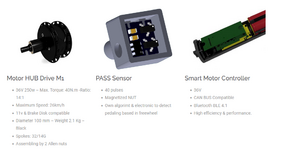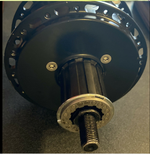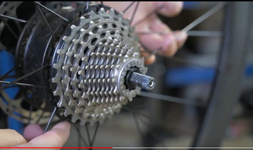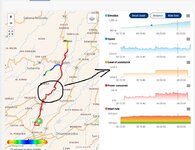Antonio,
This is a principle of any PAS. hub-drive motor. The cadence, rear wheel rpm, and motor rpm sensors combined with the controller:
- Ensure the motor activates when you are pedalling, and cut the power off when not pedalling
- Adjust the motor RPM to be in phase with rear wheel RPM. (so the motor does not push the bike more than necessary because of too high RPM or drags the bike because of too low RPM)
The motor power increases at higher cadence because the motor efficiency reaches its maximum at certain RPM range. However, the hub-drive motor power is close to the predefined maximum, and
it does not depend on the rider's power input. Downshift dramatically and start spinning the cranks with very little resistance on pedals -- the bike will still provide power close to the maximum at a given PAS level.
Said the above, I need to point out PAS hub drives have their positive sides: they are lightweight (if we are talking 250 W); their power use on long trips is very predictable (because they assist with constant power); and you travel near to the maximum possible speed for given PAS level. Another benefit is the manufacturer can easily re-design one of their lightweight road bikes and produce it as an e-bike: a lightweight, stealthy e-bike at a reasonable price.
Mid-drive motor adds at least one more sensor: the rider's torque sensor at the crank side. The torque and cadence sensors together actually form a
power meter. The measured rider's pedal power is recalculated into the motor power, and the combined pedal and motor power is transferred to the rear wheel via drive-train, taking the benefit of the e-bike's gearing. The most important feature of a mid-drive motor is it delivers truly variable power only depending on the rider's power input, and of the assistance level settings.
The big difference between the hub-drive and mid-drive motors is the former offer
constant power delivery, and the latter sport
variable power delivery at given assistance level. For this reason, it is difficult to estimate the battery range for a mid-drive motor. For instance: If I ride on my Lovelec hub-drive motor e-bike, I can safely say I can ride for 80 km in PAS 2. I need to, however, use extra tools to determine my battery range for my Vado or Vado SL.
Good mid-drive motor e-bikes are very expensive, and it is hard to make a truly lightweight mid-motor e-bike. Some manufacturers could do it, for instance
Specialized with their SL series (Specialized SL 1.1 mid-drive motor by Mahle) or Cannondale with their Topstone
Lefty Neo
Carbon (Bosch mid-drive motor).
Lightweight mid-drive e-bikes are rare. The same Cannondale makes Topstone Neo
SL, which has the same x35 motor as Orbea Gain or Vibe.



